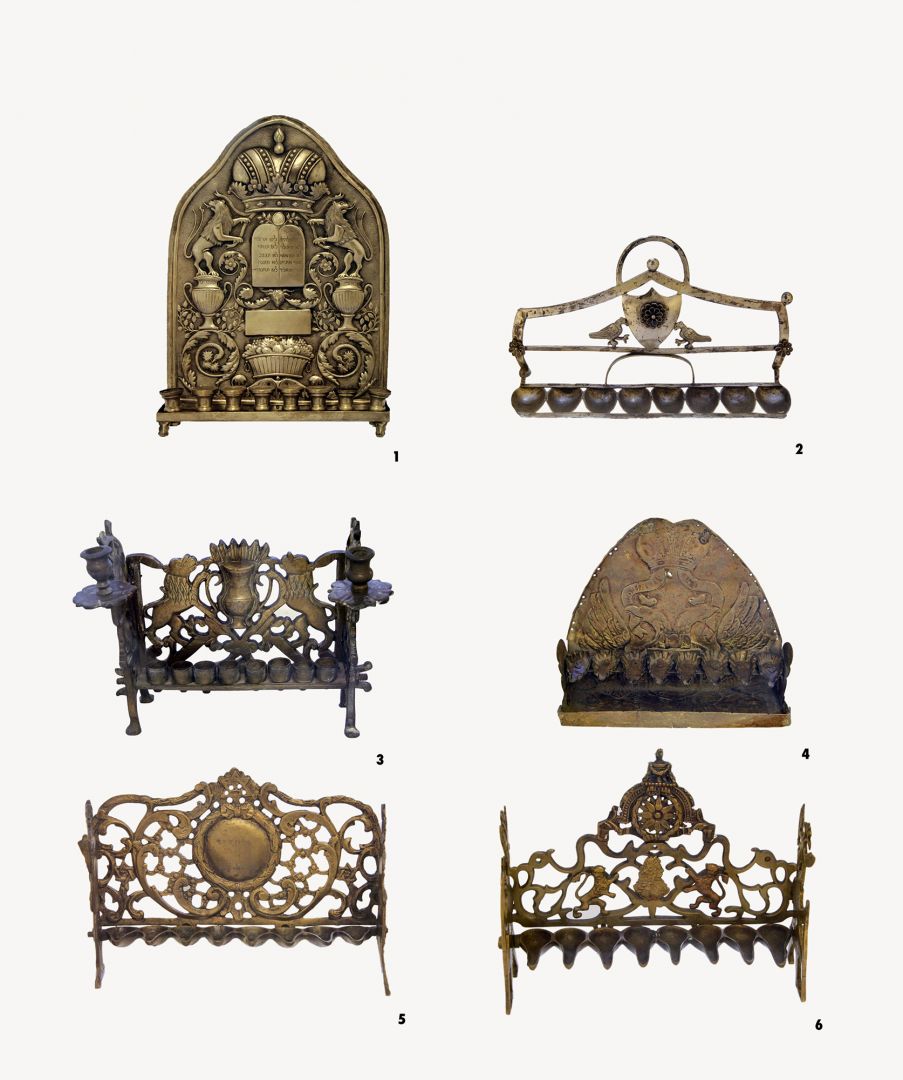3. Hall - 2. view
Hanukkah lamps
1.
Hanukkah lamp
Hanukkah lamp remade from a Torah shield. The backboard of the Hanukkah lamp, made in 1813 in Pest, was probably a Torah shield originally. It is indicated by its shape, its ornamentation with the two lions holding the Tables of the Ten Commandments with crowns above them and the small hole now covered where presumably plaques that showed the names of the holidays were placed originally.The bench with the small jars to ignite the Hanukkah flames was supplemented later.
2.
Hanukkah menorah
Recycled Hanukkah menorah. The small silver Hanukkah lamp that was designed to be mounted on the wall was probably made by a silver master craftsman with the initials MB with the reusing of existing elements.Its oil containers are recycled teaspoons, and on the backboard that was made from a napkin holder, beside the roughly cast doves, the fine-cut silver filigree rosettes are probably from a different object. Hungary, end of the 19th century.
3.
Hanukkah lamp
Since Hanukkah is an eight-day holiday, each year one of its days falls on Saturday - (Shabbat). Then the Hanukkah flames are to be ignited first, followed by the Shabbat candles. On the bench of the brass Hanukkah lamp there are eight small cylindrical containers where both oil and candles can be lit while the Sabbath candles can be placed in the candle-holders on the two protruding branches.
4.
Hanukkah lamp
As Hanukkah is a family holiday, Hanukkah lamps can be found in even the poorest households. This is presumably a home-made Hanukkah lamp made of pie pans, decorated with an embossed copperplate backboard.
5.
Hanukkah lamp
Hanukkah lamp from Prague. Hanukkah lamp from Prague from the 18th Century with Moses and Aaron on the sides, who evoke the high priests serving in the Temple. On the backrest the Star of David can be seen, which used to be the symbol of the Jewish community in Prague since the 17th century.
6.
Hanukkah lamp
Hanukkah lamps used in Eastern Europe were usually made of brass or copper with a rectangular molded base that are reminiscent of a bench. The eight oil containers on the bench, with manifold decorations on their back and side plates, are drawn from the typical Jewish iconography of plant and animal motifs. It may be surprising that decorations show significant political figures of the era. On the two side plates of the Hanukkah menorah made of brass, we see two guardsmen. While on the back plate, Leopold II., who gave favorable legal framework for the Jews of the Austrian Empire, is visible.
